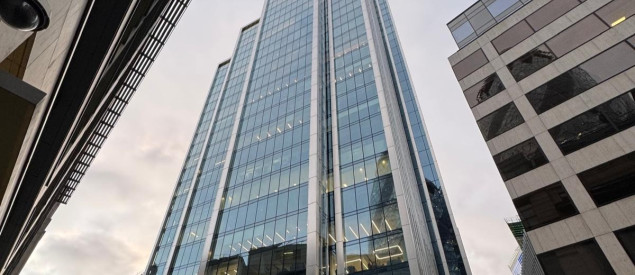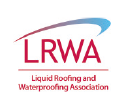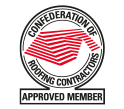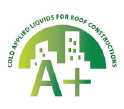Call us on
+44 (0)1268 777871Proteus Hot Melt®
Exploring the Proteus Hot Melt® Waterproofing System: Durable Solutions for Contemporary Roofing Needs
In the dynamic field of construction, where effective moisture management is essential, the Proteus Hot Melt® system from Proteus Waterproofing Limited delivers a monolithic waterproofing layer suitable for various roof types. This hot-applied system, certified under British Board of Agrément (BBA) Certificate 22/6186, aligns with UK Building Regulations and provides a bonded membrane for flat roofs, terraces, podiums, and more. Architects, contractors, and property owners can rely on its documented performance for projects requiring consistent waterproofing.
This article examines the system's documented attributes and advantages, outlines general installation procedures, and discusses its compatibility with inverted roofs, blue roofs through the Attenu8® system, and green roofs via the Pro-Living® range. Based on technical specifications and guidelines, it highlights how Proteus Hot Melt® contributes to functional roofing designs.
Attributes and Advantages of Proteus Hot Melt®
The Proteus Hot Melt® system consists of a hot-melt compound, polyester reinforcement mesh, and a mineral-surfaced capsheet, forming a continuous membrane assessed for performance in demanding conditions.
Assessed Performance Characteristics
• Weathertightness: The system prevents moisture ingress into the building, as evaluated in the BBA Certificate, making it applicable for inverted flat roofs (including zero falls), terraces, podiums, balconies, blue roofs, green roofs, and roof gardens.
• Fire Performance: In specified protected configurations, the system achieves classifications that allow unrestricted use under Building Regulations, such as Requirement B4(2) in England and Wales, and Standard 2.8 in Scotland. Restrictions apply to balconies, and project-specific classifications should be confirmed.
• Wind Uplift Resistance: The system's bond withstands wind loads, with performance tied to the roofing specification's upper layers, as per BBA assessments.
• Mechanical Resistance: It accommodates limited foot traffic during installation and maintenance, as well as minor structural movements, without damage.
• Root Resistance: Combined with Proteus Hot Melt Anti-Root Plain Capsheet, it resists root penetration, supporting green roof applications.
• Service Life: When protected (e.g., by insulation or ballast), the system maintains waterproofing for the roof's expected lifespan, based on BBA evaluations.
Practical Considerations
• Application Range: Compatible with substrates like concrete and various finishes, allowing use across multiple project elements.
• Monolithic Structure: The application method minimizes potential weak points from seams, as detailed in installation guides.
• Installation Efficiency: The pour-and-roll technique supports coverage with controlled material use.
Selecting Proteus Hot Melt® allows integration with roofing designs that meet documented standards.
General Installation Procedures for Proteus Hot Melt®
Preparation and Safety Measures
• Health and Safety: Perform risk assessments and equip with PPE, such as heat-resistant gloves and eye protection. Adhere to Safety Datasheets and CLP Regulations for handling, with precautions against fire risks.
• Storage and Handling: Keep components dry at 5–25°C for up to 12 months. Handle 25kg blocks manually and shield from weather on-site.
• Tools and Equipment: Use boilers (heating to 180–200°C), rollers, and safety items like harnesses. Clean with solvent wipes after use.
• Substrate Readiness: Inspect and repair (e.g., remove concrete laitance), clean via sweeping or vacuuming, and dry fully. Conduct adhesion tests on each area.
• Priming: Apply DPM Primer at 0.2–0.3 l/m² with rollers or brushes, drying in 1–2 hours.
Installation Steps
1. Compound Heating and Application: Maintain boiler temperatures at 190°C target. Apply at 1.5–2 kg/m² via pour-and-roll for uniform distribution. Seal incomplete sections daily.
2. Reinforcement Mesh (Proteus Hot Melt® Force): Position polyester mesh, securing as needed, and embed in compound.
3. Capsheet Placement: Prepare rolls, pour compound, and roll for adhesion with 100mm side laps and 150mm end laps. Proceed from low to high points on flat areas.
4. Detail Work: Reinforce upstands, outlets, penetrations, joints, and edges with extra layers for seals.
5. Adaptations: For zero-fall roofs, incorporate drainage per design standards. Inverted setups place insulation over the membrane.
Quality Assurance and Upkeep
• Verification: Include site inspections, integrity tests (e.g., flooding), and daily reviews with records.
• Maintenance: Check twice yearly for blockages or wear, clearing drains and addressing issues with matching materials.
• Guarantees: Available post-installation by certified contractors, covering system performance.
These procedures, supported by Proteus training, align with standards for consistent outcomes.
Compatibility with Inverted Roofs
Inverted roofs position insulation above the waterproofing, and Proteus Hot Melt® supports this by providing a protected membrane that reduces exposure to temperature fluctuations and UV.
• Advantages: Minimizes thermal bridging and aids energy performance, with options for ballast or paving.
• Installation Notes: Apply directly to the deck, then add insulation and filters. Suitable for zero-fall layouts with appropriate drainage.
Integration with Blue Roofs: The Attenu8® System
Proteus Hot Melt® works with the Attenu8® blue roof for stormwater management, using modular cells to store and release water at rates as low as 0.07 l/s via flow restrictors.
• Functionality: The membrane serves as the base, with Attenu8® forming a void above and a secondary layer for added security. Overflows manage high volumes per BS EN 12056-3:2000.
• Advantages: Reduces runoff peaks, supports planning compliance (e.g., London Plan), and avoids flotation in inverted designs, enabling sloped roof adaptations.
• Flood Management Alignment: Detains rainfall to lessen flood risks, fitting Property Flood Resilience principles for new and existing structures.
• Installation: Build on the Hot Melt® layer, secure components with tapes, and top with finishes like paving or green roof.
Compatibility with Green Roofs: The Pro-Living® Range
Proteus Hot Melt® also pairs with Pro-Living® for vegetated roofs, incorporating sedum, wildflower, or diverse plant layers.
• Suitability: Use the Anti-Root Capsheet to prevent root ingress, maintaining membrane integrity under vegetation.
• Advantages: Contributes to drainage systems, moderates urban temperatures, and supports plant growth per BS 8217.
• Installation: Layer over the membrane with root barriers, then add substrates and plants. Inspect annually for drainage and debris.
• Applications: Effective for roof gardens handling soil loads.
Training, Assistance, and Assurances
Proteus provides site-based training on substrate assessment, application, and detailing, issuing 24-month certification cards (renewable). This supports compliant installations qualifying for guarantees.
In conclusion, Proteus Hot Melt® forms a verified base for roofing systems, compatible with inverted, blue (Attenu8®), and green (Pro-Living®) configurations. For specifications or inquiries, reach Proteus Waterproofing at enquiries@proteuswaterproofing.co.uk . Choose documented solutions for lasting roof performance.












